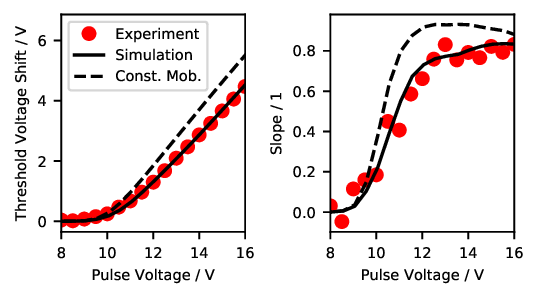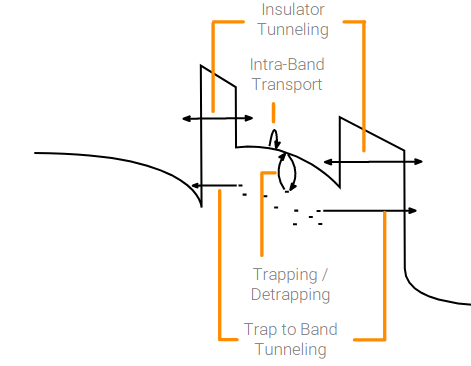27. April 2021
New TCAD model solves longstanding discrepancy between predicted and measured incremental step pulse programming (ISPP) data.
In his paper “A TCAD Compatible SONOS Trapping Layer Model for Accurate Programming Dynamics” Franz Schanovsky presents the latest findings from our memory modelling reseach collaboration with IMEC: a TCAD model of charging kinetics of trapping layers in 3D gate- all- around VNAND SONOS devices. The work builds on the established description of the trapping layer as trap-rich semiconductor and shows that a strongly field-dependent carrier mobility greatly improves the reproduction of experimental ISPP slopes.
With this new model, ISPP and retention loss measurement data is accurately predicted with one consistent parameter set.
To know more about the scientific outcomes, listen to Franz Schanovsky’s presentation at the (virtual) IMW International Memory Workshop on May 16th-19th, 2021.
For simulation software containing the complete tool flow, visit our product page or contact our sales team.


